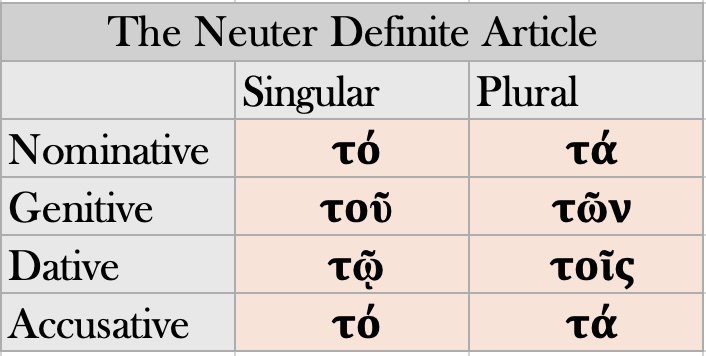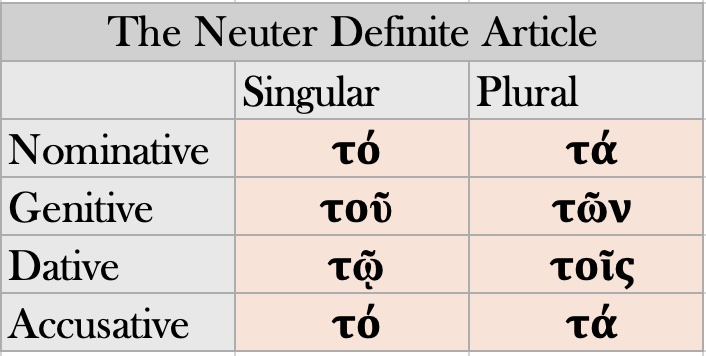9.15 Note that the vocabulary entry for our two nouns begins with τό. This is the DEFINITE ARTICLE for all NEUTER NOUNS (S 332, G 61). Recall that the definite article in Greek must match its noun in gender, number, and case. As with the masculine and feminine forms of the definite article, the neuter needs eight forms to cover the two numbers (singular and plural) and four cases (nominative, genitive, dative, accusative):
Remember that when a definite article accompanies a noun, both must parse the same. In other words, they must be the same in gender, number, and case. Note the following examples:
The Neuter Laws
9.18 Three rules apply to ALL NEUTER nouns in Greek, regardless of declension.
- The NOMINATIVE and ACCUSATIVE SINGULAR must be IDENTICAL. This pattern applies to both the neuter noun and its definite article.
- The NOMINATIVE and ACCUSATIVE PLURAL also must be IDENTICAL, and end in a short –α. This pattern applies to both the neuter noun and its definite article.
- Whenever any NEUTER noun is the subject of a verb, the verb is regularly 3rd PERSON SINGULAR, even if the neuter subject is plural! The reason seems to be that neuter plurals were originally conceived to be collective nouns (S 958), much as the words “army” and “team” are collective nouns in English.
- τὸ φῶς δείκνυσι…
- The light shows…
- τὰ φῶτα δείκνυσι…
- The lights show…
Charts JPG






